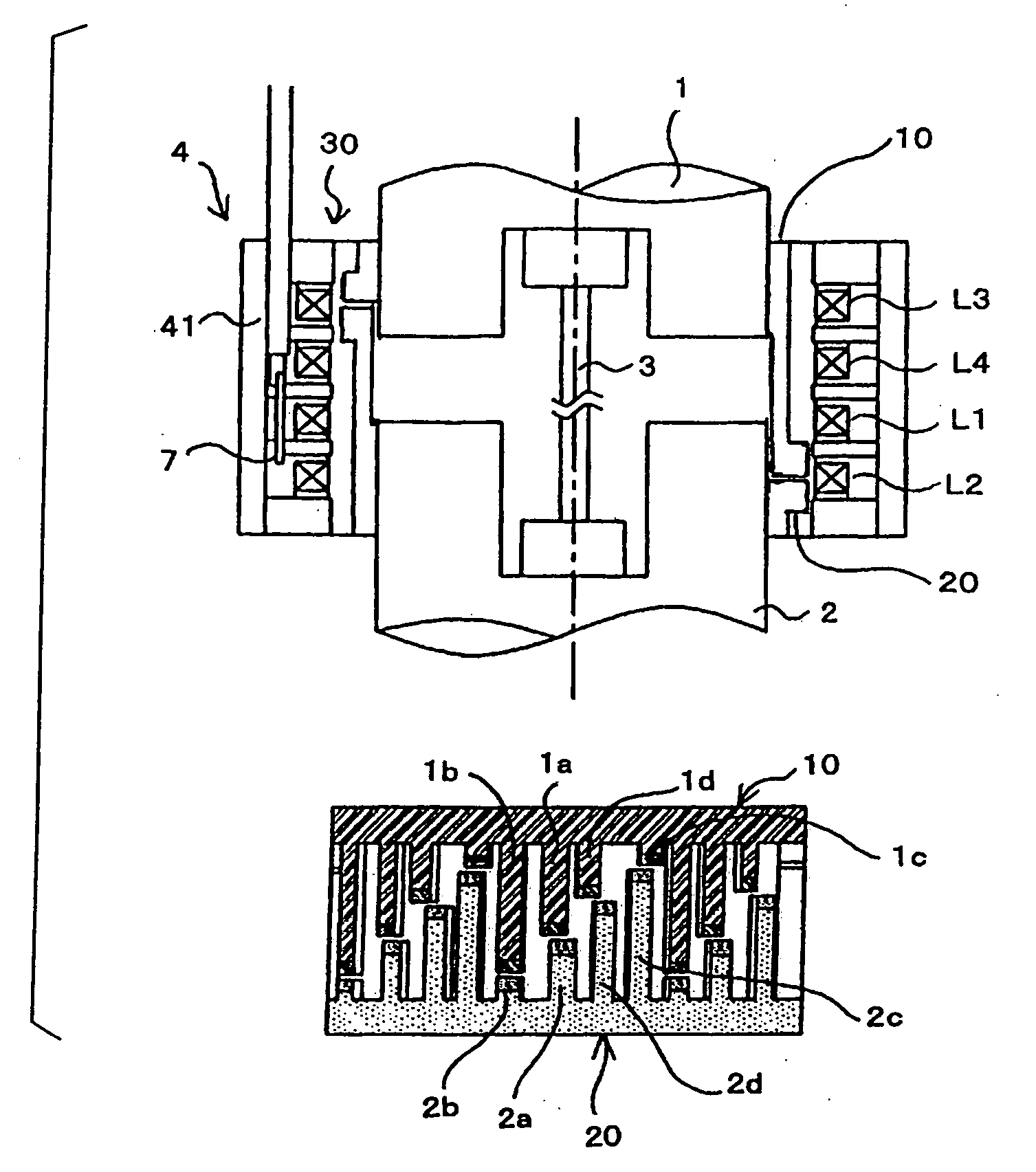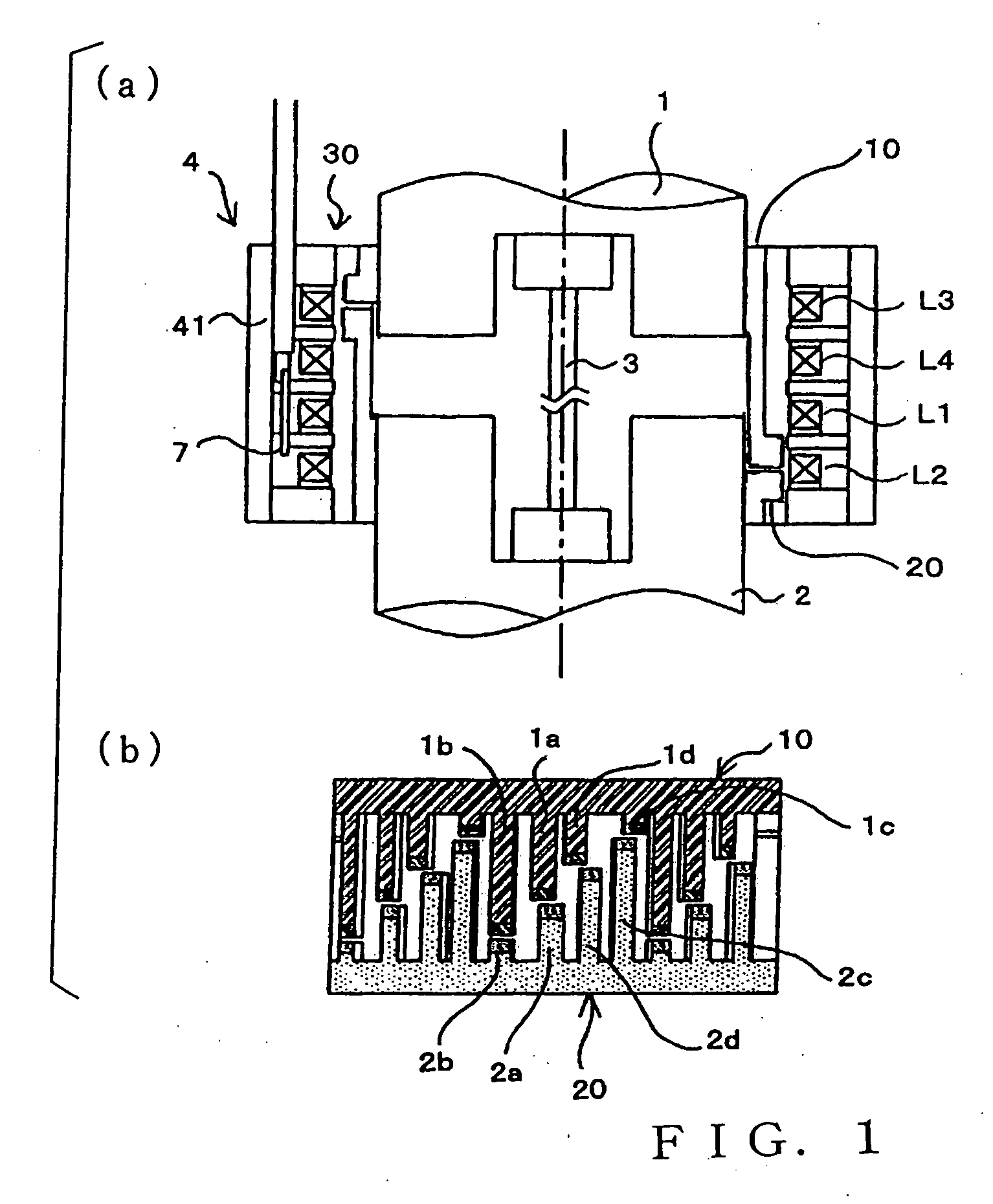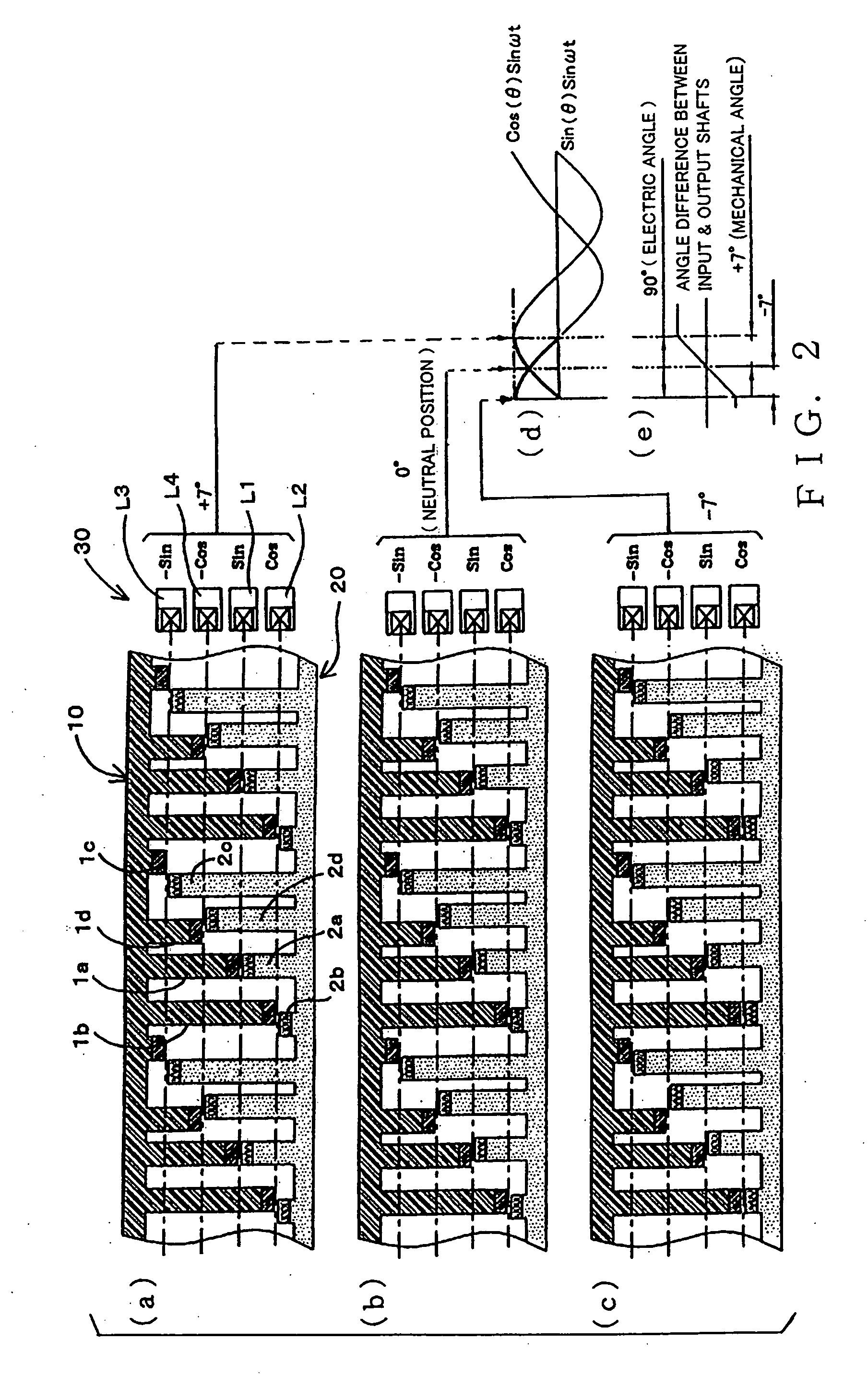Relative rotational position-detection device
a technology of relative rotation and detection device, which is applied in the direction of steering linkage, instruments, transportation and packaging, etc., can solve the problems of failure and/or other problems, poor detecting resolution of conventional techniques using potentiometers, and poor electrical conta
- Summary
- Abstract
- Description
- Claims
- Application Information
AI Technical Summary
Benefits of technology
Problems solved by technology
Method used
Image
Examples
Embodiment Construction
[0032] Now, embodiments of the present invention will be described with reference to the accompanying drawings.
[0033]FIG. 1(a) is a partly-sectional side view schematically showing an embodiment of a relative rotational position detection apparatus in accordance with a first aspect of the present invention. The embodiment of the relative rotational position detection apparatus is constructed as a torque detection apparatus 4 for detecting torsional torque acting on a torsion bar 3 of a steering shaft connected to a steering wheel of a motor vehicle. Note that, in FIG. 1(a) and other sectional or partly-sectional schematic views in the accompanying drawings, no hatching is used to indicate sectional surfaces.
[0034] In FIG. 1(a), input and output shafts 1 and 2 are interconnected by the torsion bar 3, and these input and output shafts 1 and 2 are rotatable relative to each other through a limited angular range (e.g., from +7 degrees to −7 degrees at the most) so far as torsional def...
PUM
| Property | Measurement | Unit |
|---|---|---|
| electrical angle | aaaaa | aaaaa |
| rotational angle | aaaaa | aaaaa |
| magnetic | aaaaa | aaaaa |
Abstract
Description
Claims
Application Information
 Login to View More
Login to View More - R&D
- Intellectual Property
- Life Sciences
- Materials
- Tech Scout
- Unparalleled Data Quality
- Higher Quality Content
- 60% Fewer Hallucinations
Browse by: Latest US Patents, China's latest patents, Technical Efficacy Thesaurus, Application Domain, Technology Topic, Popular Technical Reports.
© 2025 PatSnap. All rights reserved.Legal|Privacy policy|Modern Slavery Act Transparency Statement|Sitemap|About US| Contact US: help@patsnap.com



